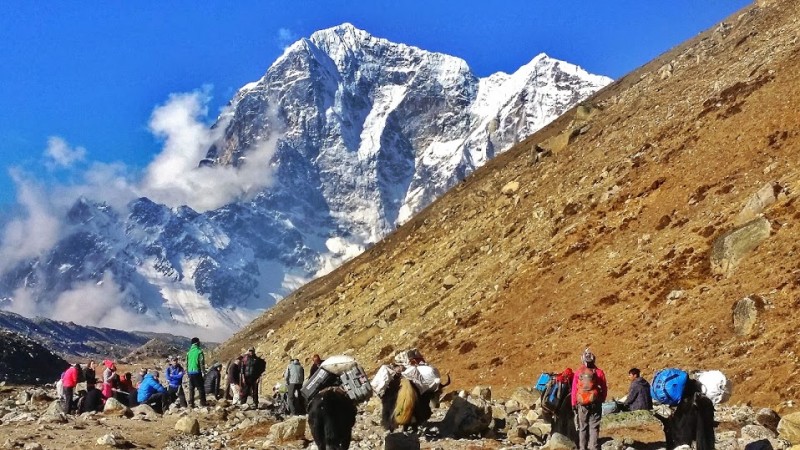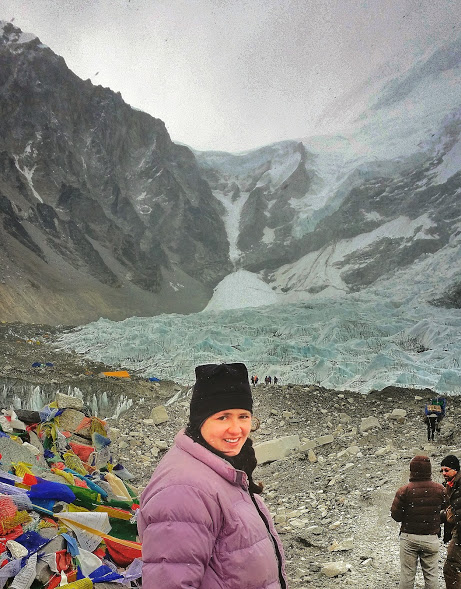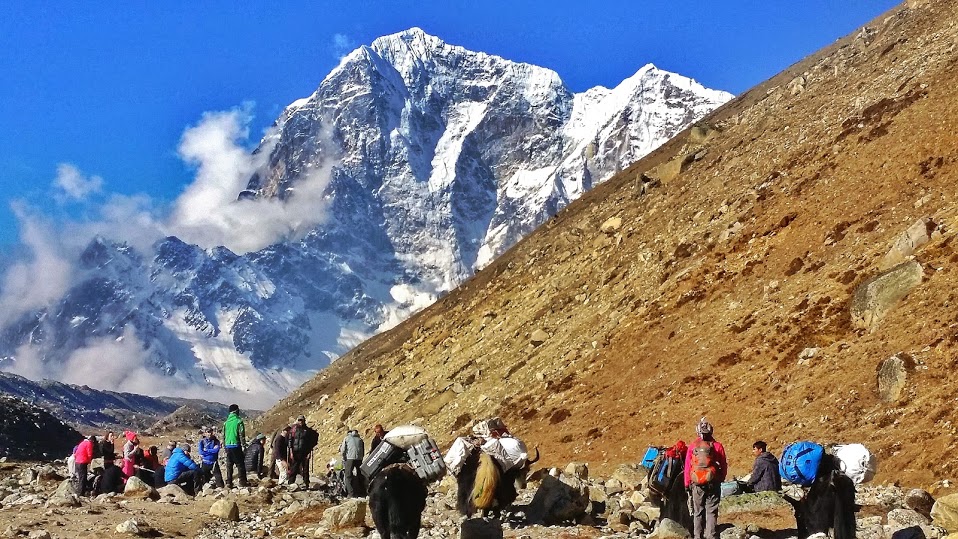I generally shy away from group travel, preferring to travel independently, but when I signed on to do the Everest Base Camp trek, I knew I wanted to do it with a group and an experienced guide and I’m so glad I did.
It takes eight days of trekking to reach Everest Base Camp and three days to get down. The route is basically straightforward as long as you have a good map, and you frequently run into other trekkers and Sherpas on the trail so you don’t need a guide for navigation.

Having a guide does help though in choosing where to sleep. There are some pretty nasty hotels along the way and your guide will be able to help you choose the cleanish (i.e. still not clean) ones and avoid the really bad ones. If you book your trip with a company they pre-book the hotels guaranteeing you a spot, no matter what time you arrive. This is a biggie in itself. I ran into quite a few independent trekkers who were stressing about their arrival time, trying to beat the crowds to ensure they had a place to sleep. I was grateful to be relieved of this pressure.
While having a cleanish place to sleep is in itself is one reason to go with a guide, it’s not the most important by a long shot. For me the #1 reason to do a guided Everest Base Camp Trek is safety. While the trail is not strenuous if you’re in good condition, Everest Base Camp sits at an altitude of 5360m and arriving there safely requires some knowledge about altitude sickness, which I didn’t have.

Yomads carefully plans out how much altitude you can safely do each day and adheres to the schedule to keep you feeling good. Left to my own devices, there were several days I would have trekked further because I felt fine, but this could have been dangerous in the long run. Because of Yomads conservative approach, every one of our 14 group members made it to Everest Base Camp, despite the fact that the majority of our group, including myself felt the effects of the altitude.
I was quite sick suffering from altitude sickness, along with a lung infection, bronchitis and the famous Khumba cough that many trekkers pick up while hiking to EBC because of the dry air. Luckily for me, I was still able to continue on thanks to our guide Sujan who carried what looked like a small pharmacy with him. He had cures for every ailment trekkers might have.
Me enroute to Everest Base Camp.And perhaps more importantly he knew the signs of altitude sickness and if one of our group members were suffering he would treat them early on. This is not the case if you are trekking alone.
Shortly before arriving at EBC, we run into a 28 year old lady who could hardly walk and was being supported by her boyfriend and her father. She looked like she felt terrible and was out of it. She made it to EBC, but back at Gorak Shep her condition worsened and the only solution was to bring her down to a lower altitude. By this time it was dusk and too late for helicopters. Her boyfriend and father were unable to carry her down and started asking Sherpas to help. It took them almost 3 hours before they could find someone to assist. In fairness, I can’t blame the Sherpas. All of them were with their own clients, and climbing down carrying someone, and then climbing back up in time to trek again the next morning is exhausting and results in a sleepless night, but still precious hours were wasted.
In contrast, we had a lady in our group whose condition also worsened back at Gorak Shep. Sujan made her drink some rehydrating salts to help her regain her strength before heading down. She was so weak that she couldn’t walk and had to be carried – not an easy task, but still, within 10 minutes our guide had recruited 2 of our Sherpas who were accompanying us and to carry her (she was too weak to walk) to a lower elevation. When you’re suffering from severe altitude sickness you want to get to a lower elevation as quickly as possible to start feeling better again.
And that’s why I highly recommend trekking to Everest Base Camp with an experienced guide like Sujan from Yomads. Upon arriving in Lukla it’s possible to hire an independent guide on the spot, but you don’t know what their training or experience is. I’m sure some of them are good, but my guess is that there are also some that haven’t done additional First Aid and altitude sickness training, as Yomads requires from all their guides.

I’m a very experienced hiker, but not when it comes to altitude sickness. I’m so grateful that when I was sick, I had Sujan to help me stay within my limits to keep my illness manageable.
And as for the lady trekking with her boyfriend and father, we heard the next day that she had been airlifted to Kathmandu where she was being treated for pulmonary edema. When we finished our trek several days later back in Lukla, we heard she was still in the hospital in critical condition. I don’t know whether she survived. My thoughts are with here and I hope she pulled through!
And that’s why I think it’s so important to do the Everest Base Camp with a guide!
Disclosure: Thank you to Yomads for keeping me safe. As always all opinions expressed are my own.
